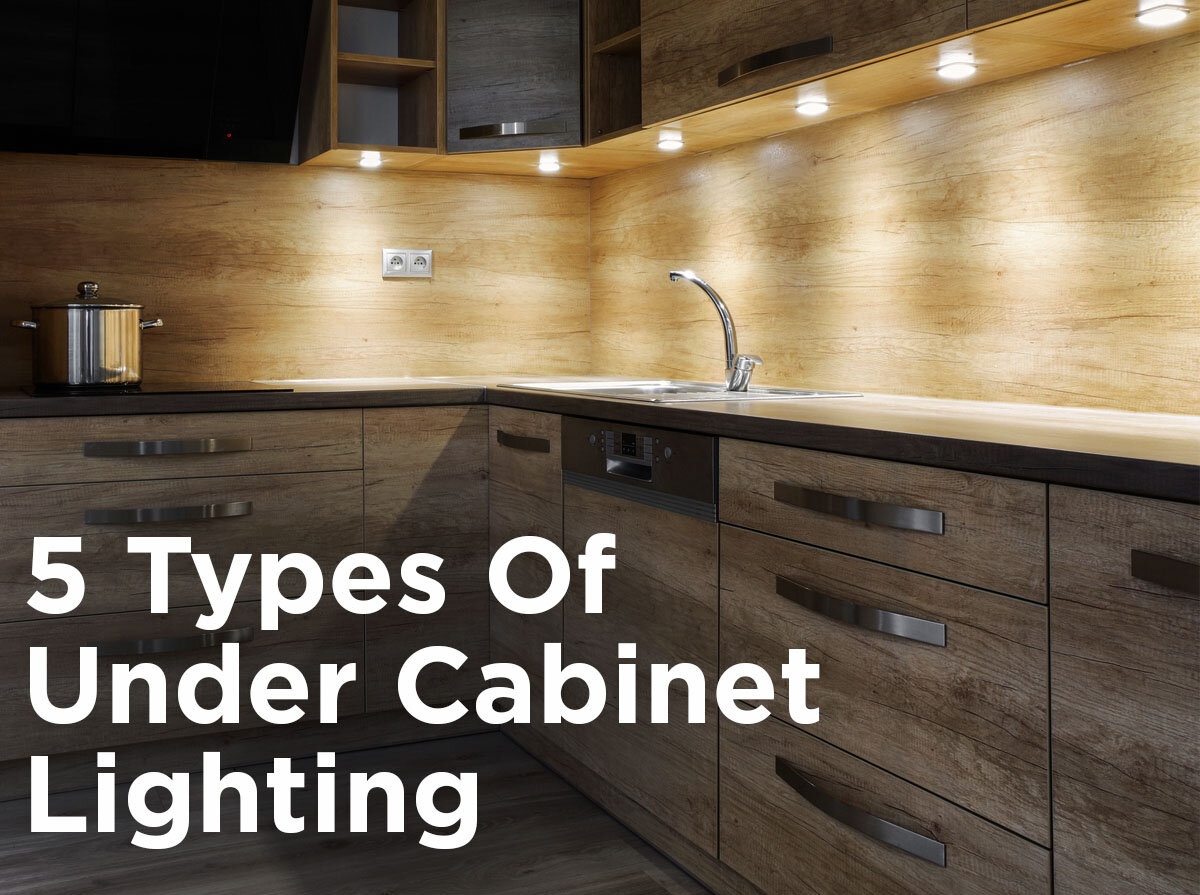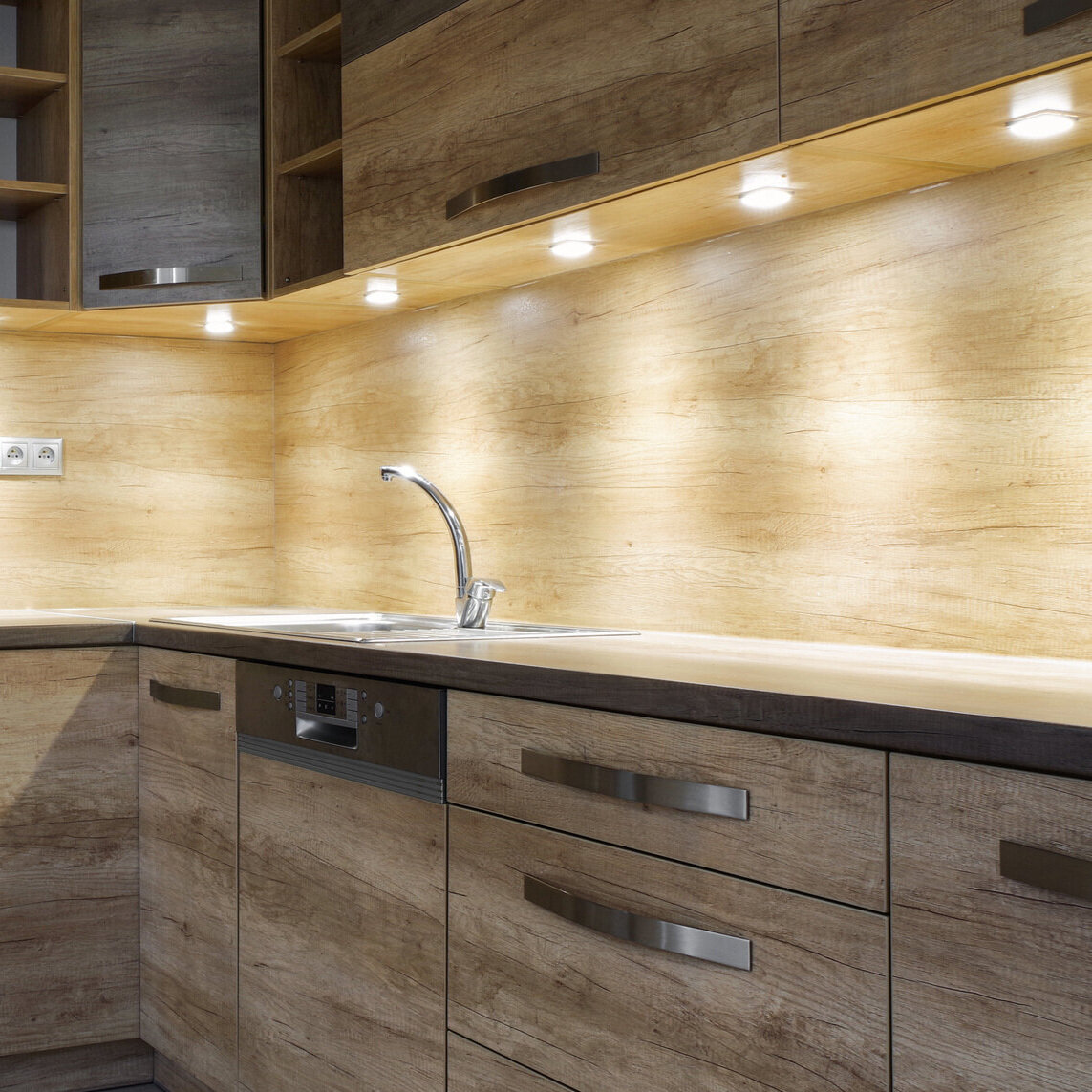5 Types of Under Cabinet Lighting: Pros & Cons
Whether it’s in the kitchen, office, or over a craft table, sometimes your work space needs more light. Under cabinet lights, also known as countertop lights, have been around for a long time, but with new options becoming available the trend has gained a new life. Don’t let the amount of choices leave you in the dark; be aware of the pros and cons of each type.
Xenon Fixtures
While they might one of the oldest technologies in under cabinet lighting, the xenon fixture is still highly regarded by some because of its perfect color rendering index (CRI). The clean, white light emitted by these babies can make that marble or granite countertop really pop. However, they do get hot, really hot. Hot enough that we recommend using them more for task lighting than an all-day lighting source, and you’ll want to keep meltable food, fresh flowers, or fruit away from the light.
Pros:
Can come with 3-way switch high-low-off functions
Lower initial cost than other options
Hard-wired or plug-in options
Near 100 CRI
Dimmable
Cons:
Consumes large amount of energy
High heat emission
Puck Lights
Named for their hockey puck shape, puck lights are a very popular type of under cabinet lighting. Puck lights can use xenon, halogen, or LED light bulbs depending on where you’re using them and personal preference. If color purity is very important to you, then the CRI of almost 100 you get with xenon and halogen bulbs is what you need. However, if you’re more concerned about having a long-lasting, low-heat emission bulb, then go with the LED. Often puck lights can be found in battery-powered models that simply stick to the underside of cabinets making them a great option for people who are renting or don’t want to deal with wiring lights.
Pros:
Can come in easy-to-install, battery-powered options (LED only)
More focused light
Can be dimmable
Very affordable
Durable
Cons:
Emits circles of light instead of more even lighting
Get really hot when used with halogen bulbs
Fluorescent Fixtures
A classic type of under cabinet lighting, fluorescent fixtures are still a popular choice. Nowadays, fluorescent fixtures typically use T5 bulbs which are a lot smaller in diameter than the T12 bulbs that were once the norm. The CRI isn’t nearly as high as xenon or halogen fixtures but neither is the heat emission. Fluorescent under cabinet lighting is a good middle-of-the-road option that can work for a lot of applications that don’t need anything too fancy.
Pros:
Most can be connected together for more even lighting
Run cooler than xenon and halogen fixtures
Hard-wired or plug-in options
Brighter than other options
Cons:
Color rendering may not be high enough for some applications or preferences
Pricing about the same as LED fixtures
Dimmer than other options
LED Fixtures
The newest and most energy-efficient option for under cabinet lighting are the LED fixtures and LED light bars. These types of countertop lights are the most versatile, since LEDs can come in any color temperature and several brightness levels. Keep in mind the LED fixtures are wider than the light bars.
Pros:
Can come with 3-way switch high-low-off functions
Most can be connected together for more even lighting
Run cooler than xenon and halogen fixtures
Brighter than many other options
Hard-wired or plug-in options
Very sturdy design
Can be dimmable
Long life span
Cons
Color rendering may not be high enough for some applications or preferences
Some fixtures may require separate power supply
Higher initial cost than other options
LED Strip Light
Let’s say you don’t need or want a “fixture” under your cabinets and you want a more even light than you’d get with puck lights. In that case, an effective solution would be LED strip light. If installed correctly, you should never see the LEDs, just the light produced by it. Since LED strip lights aren’t as bright as under cabinet fixtures, this option should mostly be used for accent lighting or in room that already has strong overhead lighting.
Pros:
Can be mounted end to end for truly even lighting, no dark or “dead spots”
Practically invisible when installed
Comes in waterproof options
Peel and stick installation
Very inexpensive
Long life span
Cons:
Color rendering may not be high enough for some applications or preferences
Use of a track and lens may be needed, adding extra expense
Some fixtures may require separate power supply
Dimmer than most other options
Do you have strong feelings about under cabinet lighting? Drop your opinion in the comments section below and follow us on Facebook, Twitter, LinkedIn or Pinterest for more lighting pros, cons, and advice. Don’t forget our lighting gurus are standing by (during business hours, of course) to help you with your next project








